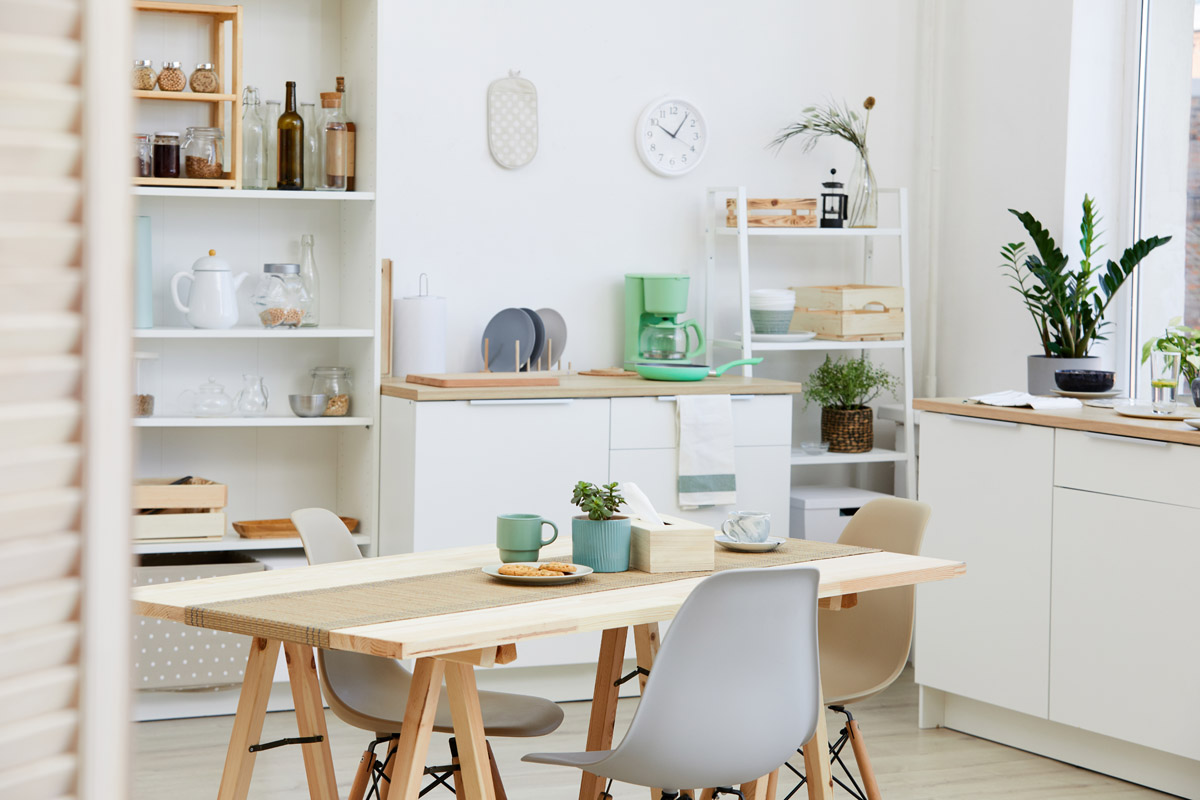As we become more aware of our planet’s health, plenty of people steadily turn to achieve greener kitchens. Practicing eco-friendliness isn’t an easy task, but it’s doable. We compiled a list of ten ideas for an eco-friendly kitchen to get you started.
Choose Eco-Friendly Materials When You Remodel
If you need to upgrade your kitchen or turn it into your dream kitchen, you can stay green using eco-friendly materials when you remodel. Your best route is recycling using salvage or antiques that stood the test of time. They guarantee longer life and outstanding durability compared to today’s materials.
If you’re not keen on using old materials, you can opt for new yet sustainable materials, such as:
Scrap Wood – They’re leftovers, but that doesn’t mean they’re not as good as their counterparts. They offer the same durability as the pieces they stem from.
Repurposed Stone-Chipped Composite Counterparts – They’re sturdy and look like granite.
Bamboo – You can use them for flooring, backsplashes, and cutting boards.
Cork – When used in kitchens, they offer excellent resistance to mold and mildew. They’re also hypoallergenic, sound-absorbing, and sourced from renewable tree barks.
Linoleum – Containing linseed oil and cork, it extends exceptional durability and moisture resistance.
Cotton or wool – Compared to synthetic fabrics, they don’t possess harmful chemicals.
More importantly, if you’re repainting your walls or painting your cabinets, ensure that you use paint with low volatile organic compounds (VOCs). VOCs are toxic gases, so you’d do best if you avoid them. If you’re unsure about a VOC-free paint type, try looking for milk paint or other paint variants containing more natural materials.
Place Potted Plants in Your Kitchen
Another crucial thing about an eco-friendly kitchen is its ability to produce less environmentally harmful carbon dioxide. You can’t completely prevent your kitchen wares from emitting this gas, but you can lessen their emissions. Place potted plants in your kitchen to absorb carbon dioxide and provide you with much-needed fresh air.
Purchase Products in Bulk
At first glance, purchasing products in bulk seems only to save you money. But if you look closer, you’ll realize it leads to an eco-friendly kitchen as well. Items in bulk often contain less packaging than individual items, such as large juice or milk bottles, snack bags, etc. Once home, you can easily separate or portion out your things into reusable containers as needed.
Use Paper Towel Alternatives
You’ll see paper towels in most kitchens. They’re cheap, easily accessible, and highly convenient. You can make a mess and clean up easily with paper towels. Unfortunately, virgin pulp paper isn’t eco-friendly, and recycled paper towels contain one too many binding ingredients that may cause you harm.
So, if you’re striving for a green kitchen, you’ll need to ditch the paper and welcome the cloth. Washable viscose cloths sourced from sustainable bamboo excellently replace paper towels. They’re also sturdier and more heavy-duty than paper towels, soaking up many times their weight in liquid.
Switch to Green Kitchen Cleaners
If you’re striving for an eco-friendly kitchen, switching to green kitchen wares is crucial. You can start with your kitchen cleaners. They typically contain chemicals you would not want to be near to, so it’s best to switch to their greener alternatives.
You can start using eco-friendly kitchen cleaners by picking cleaners with biodegradable and plant-based ingredients. You can also create your cleaning products using ingredients like baking soda, vinegar, lemon oil, etc.
Select an Energy-Efficient Stove
There’s no correct answer to the stove type everyone should use, but you should find a solution for yourself. You’ll do best with a stove that you’ll gladly use for decades to prevent wasting manufactured materials. Keep these things in mind, too:
Induction Stoves – Highly energy-efficient compared to other stoves but requires you to use induction cookware, which tends to be expensive.
Ceramic-Glass Cooktops – Easy to clean and almost as efficient as induction stoves but requires you to use compatible cookware as well.
Gas Stoves – Produce more nitrogen and carbon dioxide than electric stoves, yet offer a more convenient and controlled way to cook. When buying one, look for gas stoves with low BTU output. The lower its BTU output is, the more energy-efficient it is.
Electric Coils – Least energy-efficient among stove types.
Use Stoves Efficiently
For an eco-friendly kitchen, do your best to use your stove efficiently. If your burner is eight inches, ensure you’re using an eight-inch or larger cookware to reduce heat waste. Use close-fitting lids when cooking to keep the heat in and reduce your cooking time, too.
Pick Green Kitchen Appliances
Besides paper towels, eco-friendly kitchen cleaners, and energy-efficient stoves, you can achieve a greener kitchen using eco-friendly kitchen appliances. Here are a few tools to give you an idea:
Chest Freezers – Chest freezers support an eco-friendly kitchen’s goal with its built. Heat always rises, and cold air falls. Using a chest freezer means that when you open your freezer, air comes back down. It’s better than a vertical freezer that loses cold air as soon as you open it.
Solar Ovens – Using solar ovens is like baking things in the sun, producing meals with bold, intense flavors slowly heated. Of course, you don’t need any energy besides the sun’s heat itself, so you’ll have an eco-friendlier kitchen when you use solar ovens.
Crock Pots – If you love warm food, you’ll need a crockpot in your kitchen. Crockpots save your kitchen from using up more energy. Food cooks slower in a crockpot, but you can guarantee your meal’s insulation and deliciousness with it.
Pressure Cookers – Pressure cookers excellently seal your meals within, which speeds up your cooking times. Less cooking time equals less energy used, so a pressure cooker ranks relatively high on a green kitchen list.
Cook Enough to Last for a Couple of Meals
In an eco-friendly kitchen, cooking in bulk is your friend. You can easily portion out your servings and store them for later consumption. Of course, you’ll save yourself some time by cooking in one go, too. Remember to use reusable containers when storing your meals.
Create a Compost Pile
You can’t avoid organic kitchen scraps when you’re cooking, but you can keep a greener kitchen. Create a compost pile for your biodegradable kitchen scraps so they can turn into nutrient-rich soil for your garden. If you’re already using eco-friendly kitchen materials and reusable things, you’ll lessen your waste even more by composting.
The Rise of Green Kitchens
Keeping an eco-friendly kitchen is more challenging than proceeding with our old ways at first, but it’s gratifying. With a greener kitchen, you’re supporting the environment and lessening your exposure to harmful substances. We hope our list helped you with taking a few steps towards an eco-friendlier kitchen!


